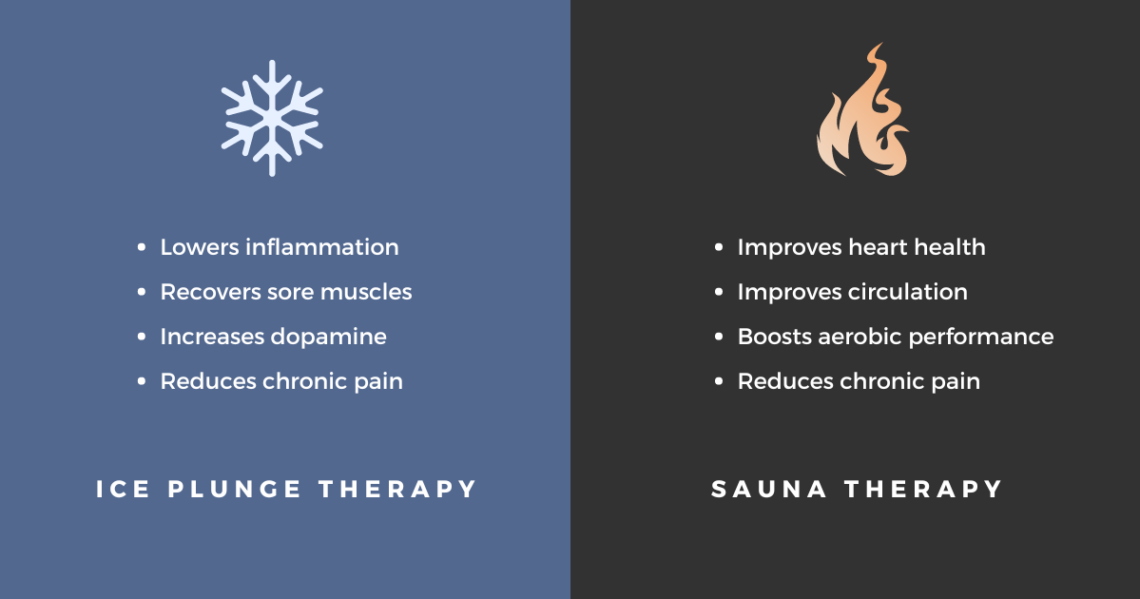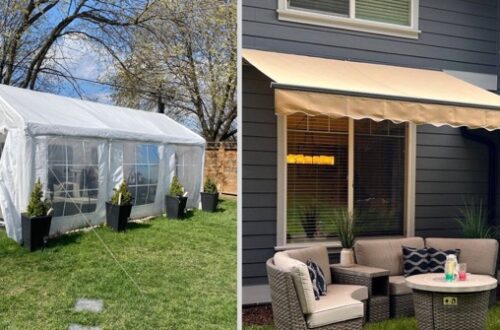Ever thought about combining the fiery heat of a sauna with the bracing chill of a cold plunge? This hot-cold duo has been making waves in the wellness world, and for good reason. Not only does alternating between extreme temperatures boost blood flow and enhance circulation, but it also gives your body and mind a powerful reset. Whether you’re looking to improve recovery, lower stress, or simply feel more alive, creating a cold plunge and sauna routine could be the wellness hack you never knew you needed.
In this guide, we’ll dive deep into the benefits of pairing a sauna session with cold water therapy and walk you through how to craft your own invigorating routine. Ready to embrace the heat, the cold, and everything in between? Let’s get started!
Why Combine an Ice Bath and Sauna?
Before we jump into the “how,” let’s explore the “why.” Combining a hot sauna with a cold plunge creates what’s known as contrast therapy, which leverages extreme temperatures to stimulate blood circulation, improve recovery, and offer a unique form of stress relief.
1. Improved Circulation
When you step into a hot sauna, the heat causes your blood vessels to expand, promoting increased blood flow throughout your body. This rush of warm blood delivers oxygen to your muscles, helping with recovery and overall health. When you follow that heat with the icy jolt of a cold plunge, your blood vessels constrict, sending blood back to your vital organs. This alternating expansion and contraction of vessels is like a workout for your cardiovascular system.
2. Faster Recovery and Reduced Inflammation
Whether you’re hitting the gym hard or just dealing with day-to-day muscle soreness, contrast therapy can be a game-changer for recovery. The cold water immersion reduces inflammation, while the heat from the sauna helps relax stiff muscles. Plus, it speeds up your body’s healing process by flushing out metabolic waste and delivering fresh nutrients to your muscles.
3. Mental Clarity and Stress Relief
Let’s face it—life can be stressful. But immersing yourself in a soothing sauna session, followed by the invigorating shock of a cold plunge, can do wonders for your mental state. The high sauna temperature helps you relax, unwind, and melt away tension, while the cold snaps you back to attention, leaving you feeling sharp and refreshed. It’s like hitting the reset button on your mind and body.
4. Enhanced Mood and Endorphin Boost
If you’ve ever felt the euphoria of stepping out of a cold plunge or wrapping up a sauna session, you know how good it feels. The combination of extreme temperatures triggers the release of endorphins—the body’s natural feel-good chemicals. Whether you’re embracing the heat or enduring the cold, your body responds by flooding your system with mood-boosting hormones, leaving you with a sense of blissful well-being.
Setting Up Your Cold Plunge and Sauna Routine
Now that you know why you should be doing it, let’s break down how to create your own cold plunge and sauna routine. Whether you’re setting this up at home or using facilities like a gym, spa, or wellness center, the principles remain the same. It’s all about balance, timing, and respecting your body’s natural limits.
Step 1: Choose Your Sauna
There are a few different types of saunas to choose from, each offering a slightly different experience. The key is finding one that suits your preferences and goals.
- Traditional Sauna: Using a sauna heater to warm the air, these saunas typically reach temperatures between 150°F and 190°F. The dry heat from a traditional, indoor sauna helps you sweat out toxins and relax tense muscles.
- Infrared Sauna: Rather than heating the air around you, infrared saunas use infrared light to heat your body directly. While the temperatures tend to be lower (around 120°F to 150°F), the heat penetrates deeper into your muscles, making this a gentler option for those sensitive to extreme heat.
- Dry Sauna: Similar to the traditional sauna, the dry sauna heats the air with minimal humidity. It’s great for those who love high heat but prefer less moisture in the air. Learn about the differences between a dry sauna vs a wet sauna here.
Step 2: Set Up Your Cold Plunge
Now for the cold! There are several ways to create a cold plunge setup, ranging from simple to more advanced:
- Cold Plunge Tub: This is a specialized tub designed for cold plunging. Fill it with ice water or connect to a cold plunge chiller and adjust the temperature to between 50°F and 60°F for optimal results. Some people opt for an ice barrel or an inflatable cold plunge in their backyard for a more immersive experience.
- Ice Bath: Not ready to commit to a full tub? A simple ice bath in your regular bathtub can do the trick. Just fill your tub with cold water and toss in a few bags of ice to lower the water temperature.
- Cold Shower: If space or budget is a concern, start with a cold shower. While cold showers and ice baths differ, the cold exposure will still trigger many of the same benefits.
Step 3: Timing and Duration
Timing is key when creating your routine. How long you spend in the sauna and cold plunge will depend on your goals and experience level. Here’s a basic structure to get you started:
- Start with the Sauna: Enter the sauna for 10-15 minutes, allowing your body to fully heat up. Make sure to stay hydrated and pay attention to your body—don’t push yourself too hard.
- Cold Plunge: After your sauna session, immediately immerse yourself in the cold plunge tub or ice bath for 1-3 minutes. If you’re new to cold therapy, start with shorter durations and work your way up.
- Repeat the Cycle: Repeat the hot sauna cold plunge cycle 2-3 times. You’ll start to notice your body acclimating to the shifts in body temperature, and you might even crave that refreshing cold after the intense heat.
- End with Cold Water: It’s a good idea to finish with a cold session. This helps close your pores, reduces lingering inflammation, and leaves you feeling rejuvenated.
Step 4: Adjust to Your Comfort Level
Don’t feel pressured to stick to rigid timing if your body isn’t ready. Everyone reacts to extreme temperatures differently, so listen to your body. If you feel dizzy, lightheaded, or overly fatigued, it’s okay to cut your session short and build up gradually over time.
Step 5: Incorporate Recovery Elements
After you’ve completed your cold plunge routine, give your body time to recover and recalibrate. This is the perfect opportunity to stretch, meditate, or relax in a hot tub or bath. Adding in these slower, calming elements will help you feel centered after the extreme highs and lows of the cold plunge and sauna combination.
Key Benefits of a Sauna and Cold Plunge Routine
So, what are the real, tangible benefits of incorporating a cold plunge and sauna routine into your life? Let’s break it down.
1. Better Circulation and Cardiovascular Health
As mentioned earlier, alternating between hot and cold temperatures encourages improved circulation and enhances blood flow throughout your body. This can lower blood pressure and improve overall cardiovascular health.
2. Enhanced Recovery
Don’t know how often you should cold plunge and sauna? Turns out, making it a part of your weekly routine can considerably help with muscle recovery. The alternating heat and cold help reduce muscle inflammation, speed up recovery, and provide much-needed pain relief after tough workouts or long days on your feet. It’s no wonder many athletes swear by contrast therapy for its recovery benefits.
3. Weight Loss and Metabolism Boost
Regular exposure to cold activates brown fat, a type of fat that burns calories to generate heat. This process can potentially aid in weight loss over time. Plus, your body burns more calories trying to maintain its core body temperature during cold exposure.
4. Stress Relief and Mental Wellness
The contrast between hot and cold can have a powerful effect on your mental state. Stepping into a hot sauna can be relaxing, while enduring the cold triggers a release of endorphins, leaving you feeling mentally refreshed and balanced.
5. Immune System Boost
Research shows that cold water exposure can stimulate the immune system, making your body more resilient to illness. Combine this with the detoxifying and skin benefits of a sauna session, and you’re giving your body a serious wellness upgrade.
Ready to Create Your Routine?
With the benefits of cold plunge therapy and sauna sessions in mind, creating your routine is as easy as embracing the heat and cold—and staying consistent. Whether you’re an athlete looking for quicker recovery, someone seeking stress relief, or simply in need of a blood circulation boost, this hot-cold combo can help elevate your wellness routine to the next level.
If you’re ready to create your own cold plunge setup, be sure to check out ALEKO’s range of cold plunge tubs and luxury saunas designed for home use, so you can enjoy all the benefits of contrast therapy without leaving the comfort of your home.
Embrace the extremes—your body and mind will thank you.
References
¹ Sramek, P., Simeckova, M., Jansky, L., Savlikova, J., & Vybiral, S. (2000). Human physiological responses to immersion into water of different temperatures. European Journal of Applied Physiology, 81(5), 436-442. https://doi.org/10.1007/s004210050070
² Versey, N. G., Halson, S. L., & Dawson, B. T. (2013). Water immersion recovery for athletes: Effect on exercise performance and practical recommendations. Sports Medicine, 43(11), 1101-1130. https://doi.org/10.1007/s40279-013-0063-8
³ National Institutes of Health. (2014, July 28). Cool temperature alters human fat and metabolism. NIH Research Matters. Retrieved September 12, 2024, from https://www.nih.gov/news-events/nih-research-matters/cool-temperature-alters-human-fat-metabolism
⁴ Shevchuk, N. A. (2008). Adapted cold shower as a potential treatment for depression. Medical Hypotheses, 70(5), 995-1001. https://doi.org/10.1016/j.mehy.2007.04.052
⁵Janský, L., Pospíšilová, D., Honzová, S., Uličný, B., Šrámek, P., Zeman, V., & Kamínková, J. (1996). Immune system of cold-exposed and cold-adapted humans. International Journal of Sports Medicine, 17(S2), S55-S58. https://pubmed.ncbi.nlm.nih.gov/8925815/






